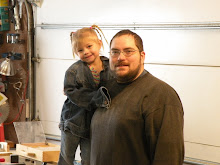It has been said before and I will reiterate it here again, “Safety is not an accident.”
There is a standing joke with those that know someone that does woodworking. It is said many different ways but to the effect of, “Still have all your fingers?” While that is funny in conversation, it is not when your digits are inches from a blade with so little indifference for what it cuts. One little slip and it is off to the hospital, hopefully with something on ice to be reattached. I say this not to be gruesome. It is a harsh truth that needs to be thought about before touching a switch on any power tool.
Please read the manuals that come with your power tools. It may not seem very macho to read directions, but neither is the need to be cared for due to an otherwise avoidable error. If you have questions on the proper use of the tools seek the advice of someone at the store where you bought it or another fellow woodworker since fewer people at the store actually know what they are selling or how to use them.
Safety glasses are the single most important accessory a craftsman can wear. Without sight it will be very difficult to design and build future masterpieces. There are always small projectiles flying off blades, shapers, and sanders. It is also important to remember safety glasses when working with paints, finishes, and the various other chemicals that are crucial to shop work. Also, if you cannot see, it will be difficult to enjoy future posts on this blog! There are many styles and sizes of safety eyewear including standard safety glasses, prescription safety glasses, goggles, and even tinted safety glasses. Go to your local hardware store or optometrist to select the best eye wear option to fit your needs.
With newer technology a lot of tools are starting to run smoother, more efficient, and therefore quieter than their predecessors. This does not reduce the need for sufficient ear protection. According to the National Institute of Occupational Safety and Health a noise level of 80 dB for 25 hours can cause hearing damage while at 110 dB hearing damage can occur in as little as one minute. This is a small range and one in which most power tools operate. The good news is that ear protection does not equate to a wad of foam or wax shoved into the ears anymore. Today’s hearing protection includes one size fits all foam protectors as well as earmuffs. Now, while earmuffs do not sound exciting to wear, there are many options and prices to choose from. There are a lot of companies that make muff-style hearing protection. Peltor makes a passive muff available for less than $25. At that price there is no excuse to not wear hearing protection. AOSafety has a model for less than $75 that has an AM/FM radio with preset options built in. It also has a jack for plugging into an external media player. Noisebuster has muffs that actually reverse the sound that is coming into the muff so that it cancels out the sound before it enters the ear canal. This model is available at the time this article was written for around $150.
Clothing is one area that is usually not considered when working in the shop. If it makes us feel comfortable it is the right clothing, correct? Wrong. While that favorite sweater may feel warm, the sleeves are apt to be caught on the moving parts of a tool and cause serious injury. The key here is not to wear baggy clothes, push up sleeves, and remove any and all jewelry including watches and rings. Here is an excuse to make a nice jewelry box to keep those in while working in the shop. Also, long hair can get caught in equipment so it is advisable to pull hair back and keep it away from moving parts.
Last but certainly not least I want to focus on the shop itself. Now I know that the guards and built in safety features are all still installed on your tools, right? Right? Well, they should be. We are all guilty that one, myself included. While looking for where the safety guard for the table saw was stashed in order to reinstall it, look around for any clutter that may cause injury. Tripping, slipping, and falling are injuries that happen easy enough and take little effort to minimize the risk of. Proper dust and debris management is very important not only to safety but to ensure a proper finish on the projects being built. Keep a shop broom and dustpan near by and keep the debris off the floor. Saw dust on a slick garage floor is a recipe for an accident. Again, I am guilty of this one but do at least make an effort to keep the dust away from where I am walking.
So there you have it. With this information, understanding how your tools work, and an ounce of common sense you can enjoy many years of rewarding, major injury-free woodworking. Happy Crafting!

